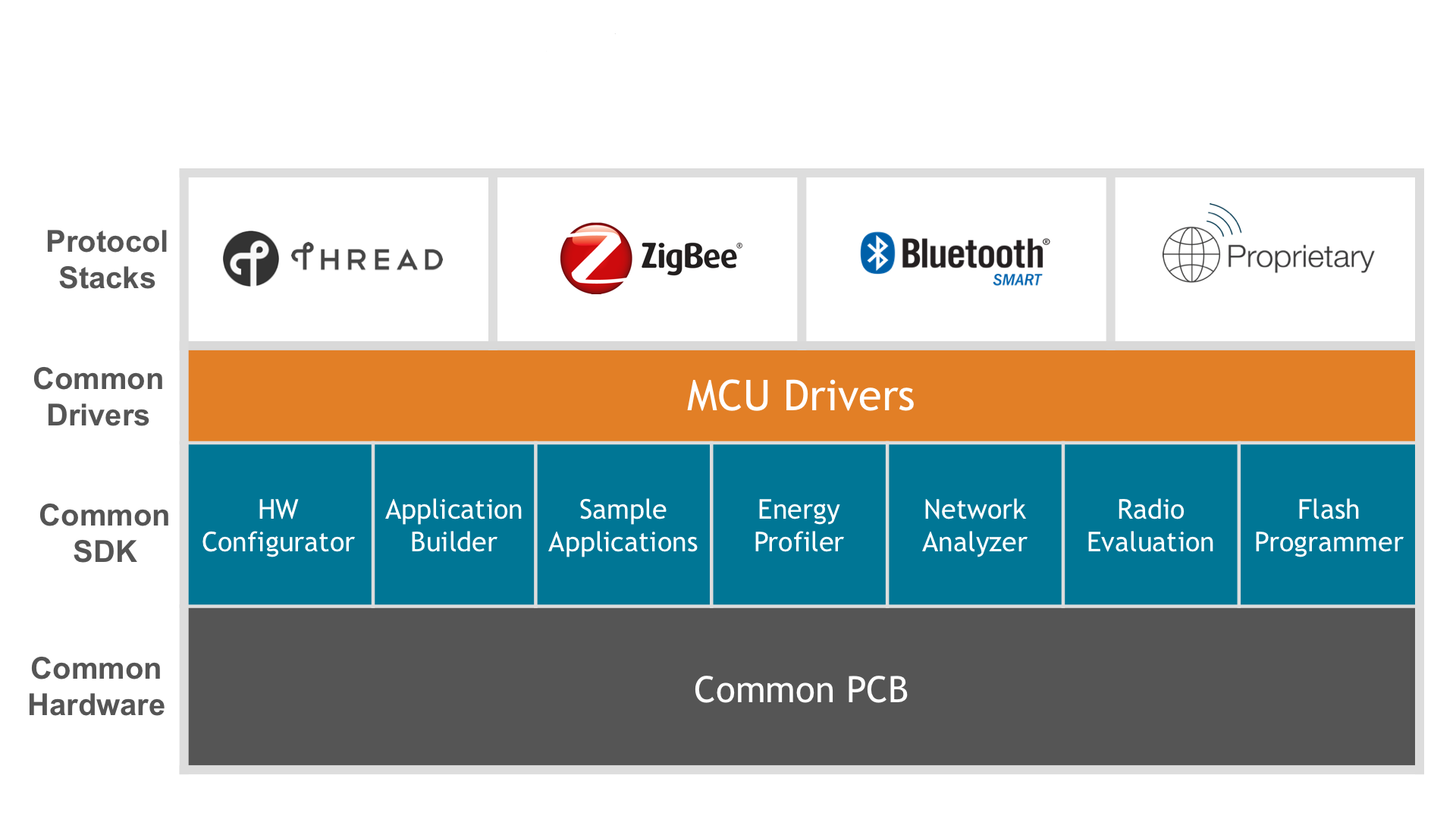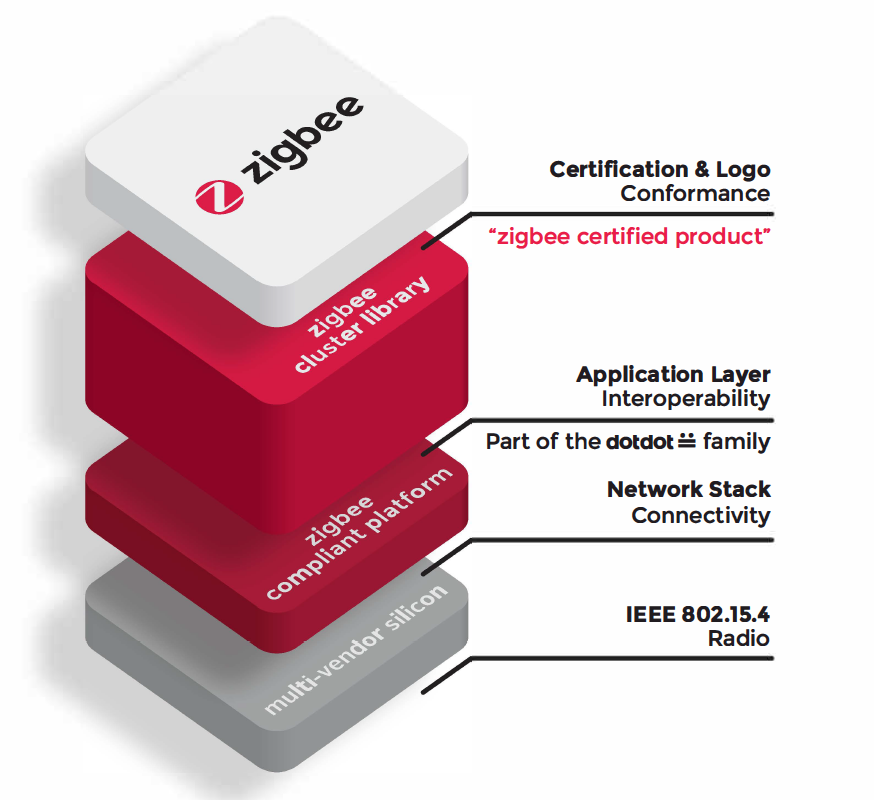BY ALEX KOEPSEL, IoT Product Manager
Silicon Labs
www.silabs.com
Asking “Alexa” to deliver coffee filters to your home looks like a simple task, but it actually involves complex RF processes carried out through the crowded airwaves. Then there are demands for instant data and more bandwidth alongside the motivation for longer battery life.
Designing connectivity solutions for products such as the Amazon Echo entails some tough engineering challenges. This article delves into the anatomy of today’s major wireless connectivity technologies (Fig. 1 ) to make engineers more familiar with the key issues in the IoT-centric RF realm. Fig. 1: A multi-protocol wireless connectivity solution.
Fig. 1: A multi-protocol wireless connectivity solution.
Wi-Fi 802.11 b/g/n
The first technology of interest is Wi-Fi, which is part of the IEEE 802.11 specification for local area networks. Like many wireless IoT technologies, Wi-Fi operates in the 2.4-GHz band. However, it has recently extended support for the 5-GHz band in order to achieve higher data rates and minimize interference from other 2.4-GHz technologies.
Wi-Fi requires larger, more sophisticated RF components and more embedded computing resources for network processing. Therefore, the Wi-Fi access-point designs tend to be higher in cost than some of the other IoT technologies. In 2017, expect major Wi-Fi discussion points addressing design challenges such as high-power utilization and the need for complex support software.
Moving forward, we can expect Wi-Fi to continue to evolve with the IoT, which likely means faster speeds, lower power consumption, and combined hardware and software solutions for coexistence in the 2.4-GHz band with Bluetooth and zigbee and the 5-GHz band with cellular.
Bluetooth
Bluetooth has evolved several times since its first specification release in 2002. What started as a protocol for streaming voice and audio data for mobile headsets has evolved into an energy-efficient wireless technology. Bluetooth low energy (BLE) is highly popular for power-sensitive IoT end-node applications.
Optimized for short-range personal area networks (PANs), Bluetooth operates in the 2.4-GHz band. Some of its most advanced characteristics include the use of frequency-hopping spread-spectrum modulation, boasting up to 1,600 hops per second, which leads to lower packet size and, consequently, smaller die area.
Then there is flexibility for maintaining compatibility with different Bluetooth variants. In 2017 and beyond, we anticipate continued Bluetooth advancements. The Bluetooth SIG has already disclosed the 5.0 specification, which will effectively extend the RF range, increase bandwidth to up to 2 Mbps, and improve packet communication for advertising applications.
The evolution of Bluetooth will likely enable some interesting applications such as multi-protocol time-partitioned beaconing and switched connectivity to commission IoT devices from a Bluetooth-enabled platform.
zigbee
zigbee is based on the IEEE 802.15.4 physical radio specification and features lower power consumption compared to Bluetooth and Wi-Fi. Due to its mesh topology and proven scalability to support 250+ node networks, zigbee is widely used in home automation and industrial mesh networks.
The combination of low-power capability and self-healing scalability is what makes zigbee unique. That partly comes with the adoption of the 802.15.4 MAC/PHY with short packet sizes, the 16-channel DFSS modulation scheme, and MAC-layer mechanisms for message-failure handling.
Next, the transmitter power can be configured to conserve energy, especially in crowded networks in which battery-powered routing nodes are nearby to help relay messages. This optimized method for handling mesh routing functions keeps memory needs relatively low, requiring less than 160 KB Flash and 32 KB of RAM. And that enables lower-cost silicon. Fig. 2: zigbee alliance calls the IoT layer dotdot.
Fig. 2: zigbee alliance calls the IoT layer dotdot.
The zigbee alliance has also specified application profiles to simplify the development of standard products like light bulbs and occupancy sensors. The common zigbee application layer for the IoT is now called dotdot (Fig. 2 ).
Thread
Thread is the most recent wireless technology to emerge from the IoT world, providing IP-based mesh networking and advanced security. The Thread Group, founded in 2014, released the specification in July 2015 and has continued to enhance it since then.
Thread is based on the existing standards, including IEEE 802.15.4, and adds special design specifications for the network and transport layers. Like zigbee, Thread operates in the 2.4-GHz band and forms a robust, self-healing mesh network of up to 250 nodes. Fig. 3: Thread supports a number of popular application layer protocols.
Fig. 3: Thread supports a number of popular application layer protocols.
What’s unique about Thread is the combination of hardware and software design to support low-power and low-cost mesh scalability, security, and internet addressing. Again, like zigbee, it offloads some of the complexity of mesh neighbor processing to static memory lookup tables.
At the same time, it keeps the transport and routing needs relatively low to operate on low-cost embedded devices with less than 185 KB Flash and 32 KB of RAM. It’s largely a software effort. That’s why Thread stack providers take pride in developing robust solutions, typically implemented on MCUs and SoCs.
As Flash memory has become cheaper and ICs have incorporated more memory, the low-to-medium memory requirements of Thread stacks have enabled greater silicon integration of RF components, including inductive matching devices, freeing developers from the complexities of RF engineering.
Proprietary sub-GHz
For low-data-rate applications like industrial sensing, sub-GHz networks operating at frequencies below 1 GHz offer benefits over more powerful, feature-rich 2.4-GHz protocols. The range is the primary factor that makes sub-GHz networks shine.
Narrowband transmissions can operate uninterrupted for a kilometer or more, transmitting data to distant hubs without the need for more complex, mesh software implementations to hop from one node to another. The sub-GHz band is also less crowded than ISM 2.4 GHz. However, in some regions, there are few sub-GHz channels available.
And that prevents developers from producing a single-architecture design solution. A related drawback is that sub-GHz airwave regulations differ by country, so duty cycle restrictions may actually limit the application’s transmission time. Overall, sub-GHz networks win in range but lack the standardization clout of the 2.4-GHz protocols.
Bringing it all together
At first glance, the IoT can look a bit like “Game of Thrones,” with ecosystems like Google Home battling Amazon Echo and Apple HomeKit. Then there is 802.11/ac at 5 GHz contending with cellular LTE.
While it remains to be seen which ecosystems and solutions will emerge as winners in the IoT juggernaut, the market is solidifying around Wi-Fi, Bluetooth, zigbee, and Thread protocols — each serving specific networking needs.
As a result of combined hardware and software engineering efforts, we’ve seen a rapid rise of wireless MCUs and SoCs capable of supporting multiple wireless protocols. These multi-protocol chips open up new IoT capabilities; for instance, simplified device commissioning and Bluetooth beaconing while on other networks.
Multi-protocol SoCs also allow over-the-air updates to deployed devices during their lifetime and provide a simple means to work with legacy proprietary protocols. So multi-protocol, multi-band SoCs are now providing greater flexibility and development options for IoT designers seeking to add wireless connectivity while simplifying their end-node designs.
Advertisement
Learn more about Silicon Labs





